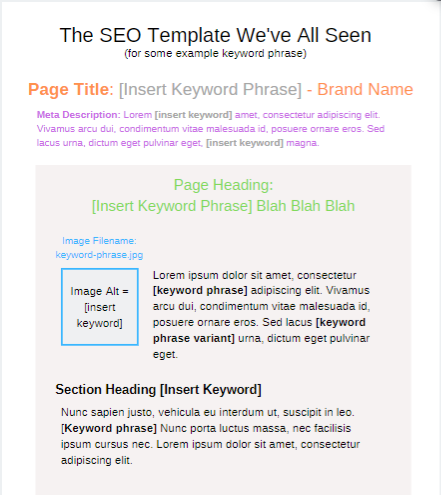
If content is queen, and the critical role SEO plays a role of bridging the two to drive growth, then there’s no question as to whether or not keyword research is important.
However, connecting the dots to create content that ranks well can be difficult. What makes it so difficult? How do you go from a target keyword phrase and write an article that is unique, comprehensive, encompasses all the major on-page SEO elements, touches the reader, and isn’t structured like the “oh-so-familiar” generic SEO template?

There’s no one size fits all approach! However, there is a simple way to support any member of your editorial, creative writing, or content team in shaping up what they need in order to write SEO-friendly content, and that’s an SEO content brief.
Key benefits of a content brief:
- Productivity and efficiency – A content brief clearly outlines expectation for the writer resulting in reduced revisions
- Alignment – Writers understand the intent and goals of the content
- Quality – Reduces garbage in, garbage out.
So the rest of this article will cover how we actually get there & we’ll use this very article as an example:
- Keyword research
- Topical expansion
- Content/SERP (search engine results page) analysis
- Content brief development
- Template and tools
Any good editor will tell you great content comes from having a solid content calendar with topics planned in advance for review and release at a regular cadence. To support topical analysis and themes as SEOs we need to start with keyword research.
Start with keyword research: Topic, audience, and objectives
The purpose of this guide isn’t to teach you how to do

